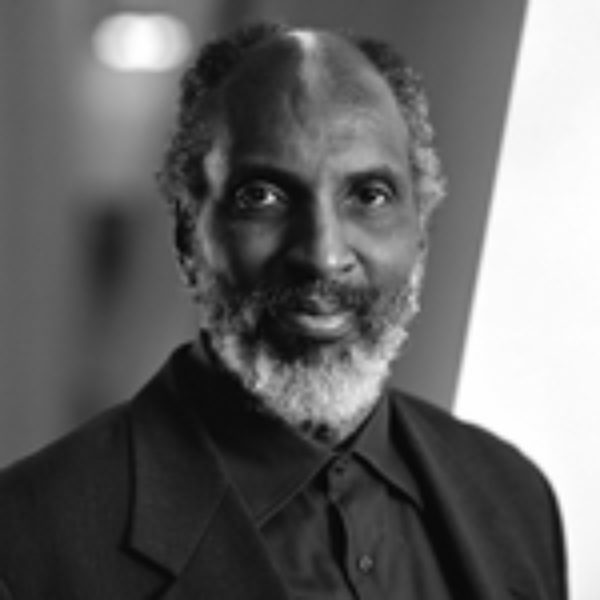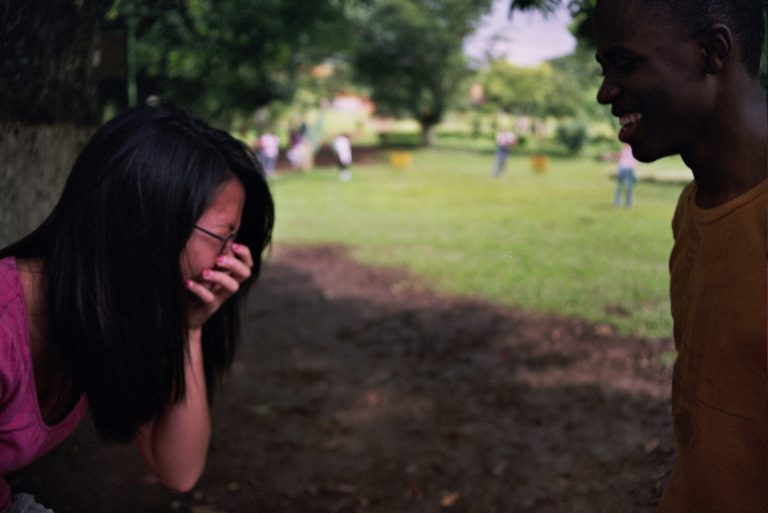
A woman holds a sign at a Black Lives Matter event. Image by Dorret/Flickr, Some Rights Reserved.
Racing Into the Future
“Identity” — Dictionary.com’s “Word of the Year” — was undoubtedly one of the most popular topics of 2015.
As what has been called “the year of identity” draws to a close, issues of race remain at the forefront of our nation’s consciousness and reality when it comes to identity. In the past few weeks alone we’ve heard: that no indictments will be made in the police shooting of Tamir Rice, a 12-year old Black boy killed at his neighborhood park; that a sitting Supreme Court Justice believes that Black students may fare better at “less advanced” universities; that a slim book that journalist Ta-Nehisi Coates wrote as a letter to his son about the reality of growing up Black in America won one of the nation’s top literary awards; that a number of national news outlets have named the Black Lives Matter movement and its founders as one of the most important stories of the year.
These stories — and many, many more — make it clear that we are a nation bound up in issues of race. Yet despite our fixation, or maybe because of it, we remain deeply conflicted about race. While we too often and too loudly insist that race does not matter, there is a growing body of research that shows race impacts many of our decisions (many with deadly consequences), and that implicit bias and racial anxiety are likely to be greater for those who cling to the belief of a colorblind society.
Our complex and confused conversations, such as the merits of claiming #BlackLivesMatter instead of All Lives Matter, reflect our attachment to — and our ambivalence about — race.
In the hotly debated case last summer surrounding Rachel Dolezal, the former Spokane, Washington NAACP leader whose presentation and claims of being Black were exposed as untruthful, everyone seemed to have an opinion. I’m less interested in the case of one white woman’s struggle with her identity than I am by what the reactions to Dolezal’s story say about us. Our conversations were not only about her racial identity but revealed deep feelings about the implications of her claims — privilege, power, and the fluidity and boundaries of race in America.
Dolezal’s case is just one recent illustration that many of our racial debates are framed between two extreme and problematic positions. We talk about race not being a biological reality and yet we saw how easily people fell back into predefined notions of racial identities when it came to the Dolezal case.
If we reject the notion that phenotype and biology define race, then we often move toward the idea that race indicates a particular experience or culture on some level. But this argument doesn’t hold up much better than the one based on biology. Does this mean regardless of one’s ancestry one’s race is decided by culture? When we talk of racial profiling by the police, landlords, or banking institutions, we are certainly not talking about culture.
The other common claim about race is that it is socially constructed. But what does the social construction of race really mean, and how deep are we willing to go to examine it? If race is socially constructed, is it a stable construction, or is it something that shifts based on time and place? And who is the “society” constructing these racial identities — are all the members of society participating in the constructing?
In the debates over Dolezal, it appeared that our society has constructed race with such strict adherence to prior definitions that we were completely perplexed and even outraged by someone transgressing this construction.
But the idea that one could just feel another race and act on that feeling is also problematic. Let’s consider for a moment if a dark-skinned African American woman chose to be white — would she then be white? And if her stated identity was questioned, would people rush to this individual’s defense, claiming the individual has the right to be whomever she chooses? If race is socially, not individually, constructed, then how do individuals get to choose?
The view that racial identities and the categories that inform them are fixed and have some essential, defining element is wrong. Yet the opposite position — that individuals enjoy complete autonomy to define their racial identity — is also wrong, an attractive fiction in a hyper-individualistic culture.
Between these two poles lies the social reality of racial identity and hierarchy. While there is some individual agency in defining one’s identity, it does not alone give birth to a racial self entirely of one’s choosing. Racial identity and racial classification may lack an objective reality, but is it not entirely subjective or illusory either. It is both social and intersubjective with real life constraints and consequences. It is both very simple and doggedly complex. Just because we have weight does not mean we have deep or immediate insights into how gravity works; similarly, having a race does not by itself reveal the complexity of how race functions.
But race is not merely a question of identity. Race is central in how we organize our structures and for whom we grant or limit opportunity. The increasing racial and economic segregation in housing, schools, and cities — think of San Francisco, DC, or Seattle — attest to a profoundly racialized set of institutions and policies.
We often fail to lean into the reality of how race powerfully shapes these economic, political, and cultural structures. The left too often frames the debate as to whether to engage in “identity-based” politics or whether to focus on the economy. This leads to a false division that gives way to a contradictory discourse, one that proclaims race as unimportant or separate, or asks us to not be “distracted” by race so that we may achieve true reform in policies that build a healthy community such as housing, jobs, wealth, or access to political participation. Yet these issues are all powerfully relational to race.
On the right, attacks on the federal government and taxes for the rich may stem partially from ideological beliefs, but historically what has made these claims stick is the belief that our public funds will go to the “undeserving” — i.e. Blacks, immigrants and “Others.” These arguments mostly play out along racial lines but who the perceived Other is remains somewhat fluid. They need not be a different race — the Other can be women, gay and trans people, undocumented immigrants, and, most recently, Muslims.
You could put a pin in any week in America in 2015 to see on display our deeply racialized reality, what I prefer to call the process of Othering.
But I am not suggesting that nothing has changed in America. The way we do race is definitely changing, and will continue to change greatly, especially as a profound demographic shift continues to shape our future America. And even if we get that there is a shift in numbers, it is equally important to recognize that there will also be a shift in categories. Who will count as white, Black, or Asian in 2050? Are Latinos the new Irish, en route to becoming “white” both as a category and socially? And what will influence these possibilities and perceptions?
How we do race will be consequential to the kind of society we have in the future. Our racing will be impacted by our history, our experience, as well as our imagined future. Our future will be impacted by the way the conscious and unconscious make meaning of our new social constructions. We must intertwine race with the other urgent issues we must confront including extreme inequality, mass incarceration, full participation in our political and cultural structures, and — perhaps most critically — with our most fundamental questions about who we are.
The calendar year of obsessing over identity may be drawing to a close, but the new year and many to follow will find us continuing to grapple with the reality of what our beliefs, narratives, and policies concerning race and the Other suggests about us. We cannot just abandon the past, and while the past will help shape the future, it will not determine the future. We must be able to look both back and forward, not as passive observers but as participants with skin in the game.

